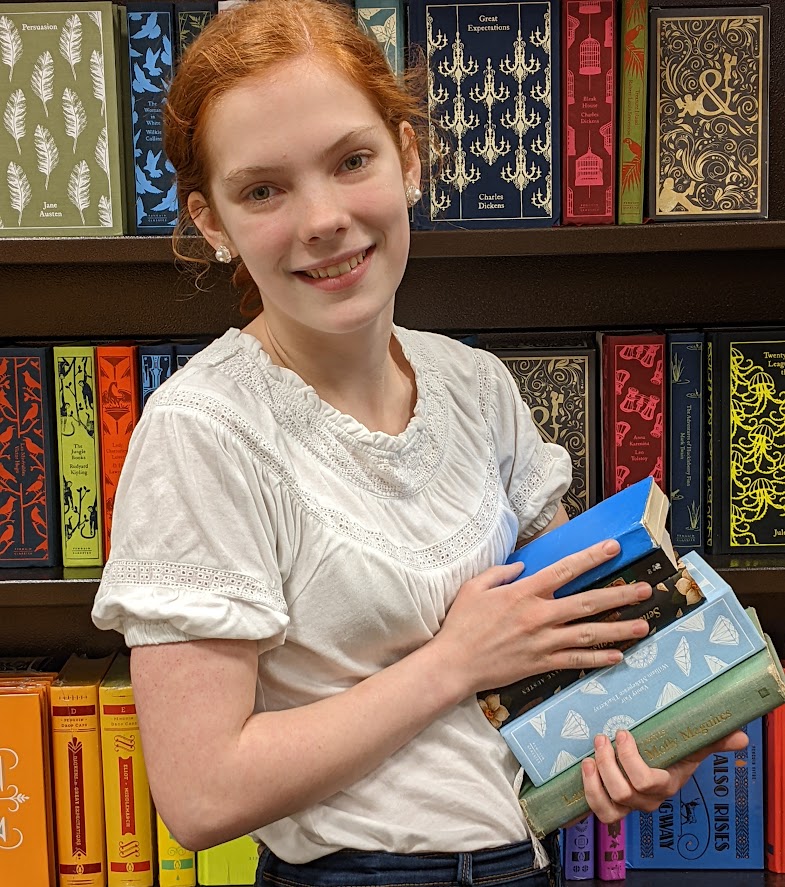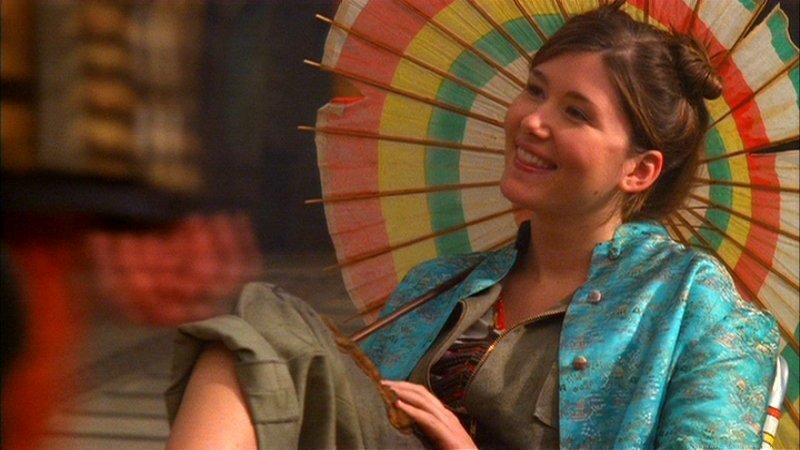As Sophia pointed out a few months ago, first impressions are a big deal — especially for readers. Readers categorize characters by their first few lines, often causing a reader to immediately decide whether they like a character, relate to them, or resent them. And that impression can last for the rest of your work.
Introducing characters is hard. Especially when introducing a group of characters along with a considerable amount of worldbuilding, making sure your readers can keep them all straight is difficult. Not to mention that introducing your characters in the wrong way can cause your readers to have a false perception of them throughout your work.
So how can we make sure that when we introduce a character, their opening isn’t just interesting, but also memorable? The conventional advice is often only to introduce two or three characters when opening your novel, but that’s not always feasible. What do you do when you have five characters who should all enter at the same time? How do you distinguish a set of characters that might come from the same social group or character archetype, yet are vastly different people? What can you do to set apart your characters, not only from each other, but also from the thousands of other character introductions that have been written?
It turns out that there is a very specific method to this that can make your characters not only distinct, interesting, and important, but also make their opening memorable for a long time to come. And it comes from the series Firefly.
Firefly
Firefly has a lot to offer to the world of storytelling. Vivid characters, an unusual setting, and a powerful theme give this serialized, one-season show a more powerful punch than many other long-winded sci-fi stories. But one thing that stood out to me was how memorable their character introductions are.
Firefly is set in a world similar to Star Wars, (albeit with some immoral elements) where science fiction inventions haven’t done much to protect people from a tyrannical government. Even though the characters can fly between planets in a few days, the government controls their every move. The protagonist is Malcolm Reynolds, a rebel who lost the war against the government a long time ago. Now he captains a freelance cargo ship that makes money by shipping passengers and goods between planets.
After meeting him in a flashback during his days on the battlefield, we’re introduced to five other characters in the first few minutes of the show, as well as a brother-sister pair on the run from the government. And the writers did an excellent job of keeping all of these characters distinct.
As a case study, let’s look at how they introduced Kaylee, the ship’s mechanic. Here’s a scrap of dialogue from her first few lines on the show, spoken as Malcolm and one of his crew members, Jayne, loads cargo onto the ship.
Kaylee: “We’re takin’ on passengers?”
Malcolm: “That’s the notion. We could use a little respectability, not to mention the money.”
Kaylee, giddily: “I like to meet new people! They’ve all got stories, an’ –”
Malcolm: “Kaylee, can you — stop. From being cheerful, please?”
Jayne: “I don’t believe there’s a power in the ‘verse that can stop Kaylee from bein’ cheerful.”
Malcolm, sighing: “Sometimes I just wanna — duct tape her mouth and dump her in the hold for a month.”
Kaylee, amused: “I love my captain.”
So much information about Kaylee and her relationship with both Jayne and Malcolm have been packed into just those few lines. But let’s focus not only on what they told you, but how they were able to communicate it so succinctly.
How To Introduce Your Characters
The writers were highly intentional about how they introduced Kaylee. They manipulated plot and setting to showcase a specific characteristic in her, and it hugely benefited her character. They didn’t just have her stumble into a conversation between Malcolm and Jayne and respond in character. Many shows, books, and movies have done this, and while it can still create a memorable character introduction, some big payoff is overlooked when a character’s introduction is less intentional.
For each character in Firefly, the writers made sure their very first moments on screen had perfect timing to a conversation that would show a specific characteristic. And why go through all that trouble? To highlight for their viewers something absolutely crucial about each one of their personalities. For example, the fact that Kaylee is cheerful.
With each character that you introduce, pick the most prominent aspect of who they are as a person. It can be an emotion, a social group they belong to, a stereotype, or a hobby. It doesn’t matter if you want to communicate that they tend to be nervous, belong to the “cool” clique, have ultimate middle-child syndrome, or love painting like nothing else. Whatever it is must be a defining characteristic about them — something you want your readers to remember about them for a long time.
Using this method does three big things for your story, so let’s break them down one by one.
1. It Quickly Defines Your Character’s Most Important Trait.
Kaylee’s most important trait is her cheerfulness. By prioritizing that trait and giving it front-and-center in her introduction, the writers ensured that she became distinct as a character. She wasn’t “the brunette mechanic” or, worse, just another face among the crew. She had interest and originality. She was undeniably different from the others. This distinction will flow directly into the next benefit this method gives you’re story, which is that
2. It Makes Your Character Memorable.
With distinction comes memorability, which is absolutely crucial when introducing a large group of characters at once. When you follow this method with each of your characters, it will be hard for your readers to forget them. When we see Kaylee’s face on the screen (or her name in a book, if it were a novel) we immediately think, “Oh, I remember Kaylee! She’s cheerful!” So much of her character is wrapped up in this quality — a one-word tag that the reader can easily attach to her name and appearance to remember her by. That makes her distinction not only interesting, but also a practical tool that can assist in keeping track of characters as a reader.
3. It Sets Up Future Conflict.
Kaylee is cheerful almost the entire show. There isn’t much that bothers her, but when it does, the audience is interested — what is so bad that it overrides Kaylee’s most prominent trait? This generates so much tension around the conflict that comes from the protagonists interacting with each other, especially considering it is such a simple tool.
You can easily apply this to your own character. What’s so bad that it makes your stoic protagonist cry? What could finally convince your bubbly heroine to open up and become more genuine? What’s serious enough that your free spirit starts planning for it?
But just because you followed this method doesn’t mean that your characters have to always fit into the mold dictated by the characteristic you selected, or succumb to cliches that often befall similar characters. Kaylee was bubbly and optimistic, but she still took real danger seriously. She didn’t have a cheerful comeback for every life-threatening situation, and she didn’t always bounce back from some of the other crew members’ teasing. Sometimes she was downright depressed, and when she became truly stressed, she was vastly different from her usual, energetic self. Just make sure that the trait you showcase is something that does affect almost every aspect of your character’s life.
For example, Kaylee is able to make friends when they infiltrate a high-society party because of her cheerfulness. She also quickly earns the trust of a suspicious doctor who becomes an important asset on their ship. She never loses hope because she believes that tomorrow could always be better than today — no matter the circumstances.
Kaylee’s optimism touches every part of her life — her relationships, her reputation, her desires, her goals, and her fears. Even when her optimism falters, it always rebounds to help her stay the same consistently cheerful Kaylee we met in the first few minutes of the show.
This method, more than any other, has created some of the best character introductions I’ve ever read or watched. Aside from being an effective tool to help readers keep multiple characters straight, it also gives writers the opportunity to hint at the direction, purpose, and personality of their characters from just their first few lines. So pick a character, find their defining trait, and write an introduction your readers will never forget.



What characters have you read about that have a strong, defining trait like Kaylee? How did the writers introduce them? And how was this article? Too sweet? Too sour? Just right? Comment below and let us know!


Hi! My name is Mara, and I’m a Christian artist, violinist, and blogger. I remember the day that I decided that I would learn something new about what makes a good story from every book I picked up — whether it was good, bad, or a mixture of both. I use this blog as a way of sharing some of the tips and tricks I’ve learned, and highlight which books, cartoons, and movies have taught me the most about writing an awesome story.

